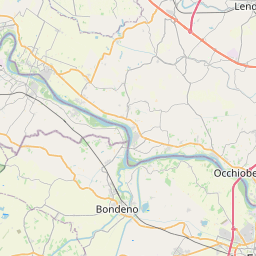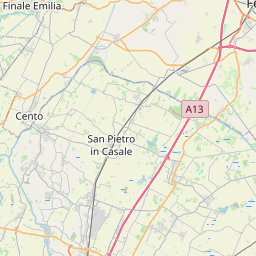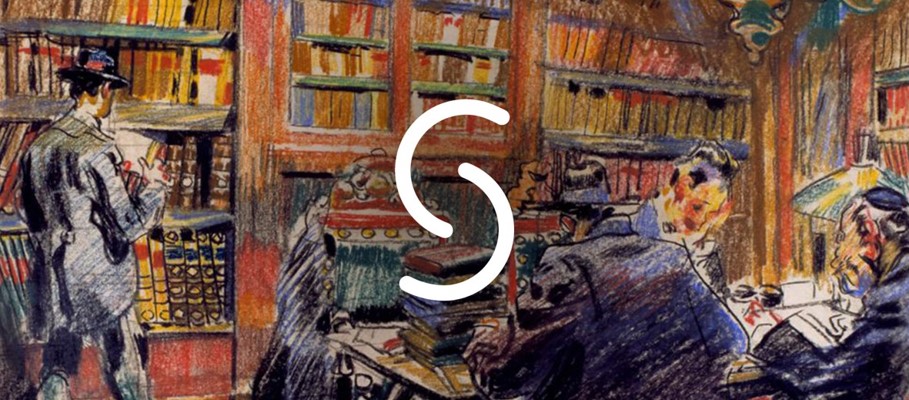Manoscritti di Classe I
Item
Country
IT
Name of institution (English)
Ariostea Municipal Library
Name of institution (official language of the state)
Language of name of institution
ita
Contact information: postal address
Palazzo Paradiso, Via delle Scienze 17, 44121 Ferrara
Contact information: phone number
0039 0532418200
Contact information: web address
Contact information: email
info.ariostea@comune.fe.it
Reference number
Ms. Cl.1
Type of reference number
Archival reference number
Title (English)
Manuscripts: Class 1
Title (official language of the state)
Manoscritti di Classe I
Language of title
ita
Creator / accumulator
Biblioteca Comunale Ariostea
Date note
12th century/19th century
Language(s)
ita
lat
Extent
822 storage units
Type of material
Textual Material
Scope and content
The Manoscriti de Classe I comprises a rich collection of manuscripts from the 12th to the 19th century produced by or related to authors from Ferrara or considered by adoption. An example related to Sephardic literature is an 18th-century literary anthology composed by Giovanni Barotti (1701-1772), "Ferrariensium et exterorum ad Ferrarienses carmina manuscripta Ioanne Barotti Ferrariensi collecta 1764" (Cl.I.70), that includes several poems by the 16th-century Sephardic poet Diogo Pires (1517-1599).
The collection also contains chronicles, memoirs, statutes, coats of arms and many other important documents related to Ferrara. It is the case of the three-volume Annali di Ferrara (dalle origini fino alla fine del XVI secolo) by Filippo Rodi (645, available in microfilm: 153-154), that contains a rare testimony on the return of the Portuguese "Marrani" (conversos) to Ferrara in 1550, after the expulsion in the previous year. Published in Leoni (2011).
The collection also contains chronicles, memoirs, statutes, coats of arms and many other important documents related to Ferrara. It is the case of the three-volume Annali di Ferrara (dalle origini fino alla fine del XVI secolo) by Filippo Rodi (645, available in microfilm: 153-154), that contains a rare testimony on the return of the Portuguese "Marrani" (conversos) to Ferrara in 1550, after the expulsion in the previous year. Published in Leoni (2011).
Archival history
The Manoscriti de Classe I aggregates part of the original manuscript collection of the Biblioteca Ariostea, which was increased over the centuries with new acquisitions, donations and incorporations of libraries that had belonged to extinct ecclesiastical institutions in the late 18th century.
Its first catalogue dates back to 1815, and was composed by Prospero Cavalieri and published under the title Codices Manuscripti Bibliothecae Pub. Ferrariensis, Pars prima. However, the catalogue that is still in use was produced decades later by canon Giuseppe Antonelli: the Indice dei manoscritti della civica biblioteca di Ferrara. Parte Prima. This catalogue was completed prior to 1862 and published in 1884. In 1919, Giuseppe Agnelli, then the director of the Ariostea, continued Antonelli's catalogue, adding manuscripts incorporated into the collection after 1862. According to Agnelli, the Manoscritti di Classe I contained 764 units in 1927. Until the early 1950s, other manuscripts were regularly added, even after the creation of the Nuove Accessioni fonds. At present, the Manoscritti di Classe I is a closed collection and comprises 822 units.
Its first catalogue dates back to 1815, and was composed by Prospero Cavalieri and published under the title Codices Manuscripti Bibliothecae Pub. Ferrariensis, Pars prima. However, the catalogue that is still in use was produced decades later by canon Giuseppe Antonelli: the Indice dei manoscritti della civica biblioteca di Ferrara. Parte Prima. This catalogue was completed prior to 1862 and published in 1884. In 1919, Giuseppe Agnelli, then the director of the Ariostea, continued Antonelli's catalogue, adding manuscripts incorporated into the collection after 1862. According to Agnelli, the Manoscritti di Classe I contained 764 units in 1927. Until the early 1950s, other manuscripts were regularly added, even after the creation of the Nuove Accessioni fonds. At present, the Manoscritti di Classe I is a closed collection and comprises 822 units.
Administrative / Biographical history
The Biblioteca Ariostea is located in the Palazzo Paradiso, a private palace belonging to the Este family built in 1391. In the 18th century, the Palazzo was equipped with an Anatomical Theater, a Botanic Garden and a Library Room, founded in the early 1750s. The library was refurbished in 1801. In the same year, the Palazzo Paradiso housed the ashes of Ludovico Ariosto, who ended up giving his name to the library. The Biblioteca Ariostea also preserves a rich collection of manuscripts related to Ariosto and other local writers, such as Torquato Tasso, Vincenzo Monti or Corrado Govoni.
In 1963, the University of Ferrara was moved to the Palazzo Paradiso, while the Ariostea remained located there. In 2006, the Palazzo and the Biblioteca reopened after a long restoration. Today, the library comprises a precious bibliographic patrimony of about 400,000 units.
In 1963, the University of Ferrara was moved to the Palazzo Paradiso, while the Ariostea remained located there. In 2006, the Palazzo and the Biblioteca reopened after a long restoration. Today, the library comprises a precious bibliographic patrimony of about 400,000 units.
Access points: locations
Access points: persons, families
Access points: subject terms
Access points: document types
Access, restrictions
Part of the collection is microfilmed.
Finding aids
Links to finding aids
Existence and location of originals
Author of the description
Carla Vieira, 2022
Published primary sources
Linked resources
Filter by property
| Title | Alternate label | Class |
|---|---|---|
| Manuscripts | Existence and location of copies |
| Title | Alternate label | Class |
|---|---|---|
| Biblioteca Comunale Ariostea | Collections (official language of the state) |













